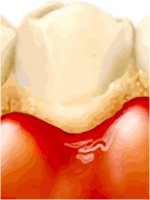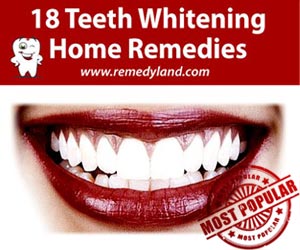What is dental plaque
Dental plaque is a form of biofilm, a group of bacterias floating in liquid and mucus, which accumulates on the tooth enamel. These types of accumulations focus on tooth enamel and periodontal tissues to substantial levels of bacterial metabolites, which lead to dental health problems. Research has determined that at least four hundred different bacterial types could be present in tooth plaque. Plaque accumulation is established by a poor connection of the bacteria’s to salivary simple sugars developing a cover on the exterior of the tooth enamel. Tooth enamel is usually negatively charged and tooth plaque is positively charged.
Opposite charges draw and connection to one another. It is accompanied by a powerful connection through sticky polymers of glucose, that are created by the microorganisms from nutritional glucose. When tooth plaque gets older, a sticky coating is created and accommodate various kinds of bacteria’s. Tooth plaque, that is couple of hours old, is a lot less destructive compared to tooth plaque, that is couple of days old. Once left without treatment, dental plaque could cause severe oral health issues, also it could sooner or later grow into tartar, a mineralized type of tooth plaque which happens to be extremely destructive and also very hard to get rid of from the tooth enamel.
The good news is, there are a variety of methods to battle tooth plaque and maintain the oral cavity healthful. This accumulation in the oral cavity is completely natural, also it usually has a wide pass by section of the microorganisms which refer to the oral cavity a home. Microorganisms continuously colonize the surface areas of the human body constantly. Because of continuous losing of cells, huge masses of microorganisms are stopped from building up on these types of surface areas. In the oral cavity, tooth enamel offer a tough, non removing surface area in which bacterial accumulation can develop.
It begins as a bacteria touches on a tooth, using the heated, wet surroundings of the oral cavity and begin boosting and drawing more harmful bacteria. When the harmful bacteria accumulate, they will be gummed with each other by mucus along with the secretions produced by the harmful bacteria, developing a coating on the exterior of the tooth.
Dental plaque formation
Development starts with acellular coating, known as the acquired protein film that develops on the surface tooth enamel, this film of salivary proteins that contain oligosaccharide chains and lipids, however no harmful bacteria, develops right away on bare teeth enamel surface areas. Free hovering quickly colonize the tooth enamel, for example Streptococcus, that are usual residents on the oral cavity, develop a primary connection to the pellicle by poor and reversible factors.
In case these types of harmful bacteria are not taken away, they sooner or later connect on their own with adhesive layers, like pili. Microorganisms that had been not able to be attached to the pellicle start to stick to the initial coating of colonizers with not reversible parts through unique adhesion receptor relations. The microorganisms duplicate and develop microscopic colony of cells inserted in an noncellular element found within all tissues and organs. Because of the earlier stages in which harmful bacteria develop attachments, initial colonizers become set up.
This contributes to dental plaque complication because of allogenic elements, like oxygen usage within tooth plaque producing anaerobic regions, food chains becoming set up and an improved variety of receptor areas for bacterial attachments. Cell separation and recruitment of new harmful bacteria additionally permits the bacterial number to raise. After that microbial variety continues to raise, at the time of levels of cell splitting reduce.
The uniformity character of tooth plaque gets noticeable like a small pieces of microenvironments grow, especially parts of different hydrogen ion concentration, oxygen levels and supplementary products of metabolism accumulations around and also within microscopic colony of cells. The tooth plaque microbial ecology gets to a pseudo-steady-state climax population, in which you can find a continual change of cells, however the total structure stays approximately the identical. When it reaches this stage, a heavy, three dimensional coating of dental plaque is created.
Dental plaque removal
Salivary flow, eating meals, motion of tongue and cheeks over the tooth enamel are self cleaning systems which eliminate plaque on the teeth. Brushing and flossing daily will allow you to get rid of tooth plaque. A toothbrush could be helpful to take away tooth plaque on most of the surface areas of the tooth enamel apart from spots between teeth. If it is put to use properly, dental floss eliminates tooth plaque from spots, that could possibly create caries.
At this point, dental plaque is fairly simple to get rid of, a fast sweep with a toothbrush is going to take nearly all of the harmful bacteria away, making them to begin from start when you want to accumulate one more coating of dental plaque. The dental plaque is not particularly destructive at this point. In a very solid coating of dental plaque, the harmful bacteria at the foundation is going to inhale anaerobically, due to the fact that they do not have fresh air. Living without air is a sleek living technique, additionally generates acids which could eat up the exterior of the tooth enamel, leading to deterioration.
In case it is allowed to keep on developing, a dental plaque will begin to mineralize, like talked about above. Dental plaque can be the reason for periodontal conditions, that happen to be bacterial infections that have an effect on the holding constructions of the tooth. The best known type, gingivitis, is an inflammatory disease of the gums. It happens to be related to accumulations of bacterial plaque.
Conditions which are restricted to the periodontal normally do not result in loss of teeth, however there are additional more severe types of periodontal problems that impact much deeper tissues together with bone. Dental plaque could additionally host microorganisms, incorporating secondary invaders that could lead to difficulties for the human body. A bacterial changes inside the body could also cause a significant increase of bacteria in the oral cavity and all these harmful bacteria could begin to produce unpleasant odors and spots that are visually embarrassing as well as harmful.
Many dentists advise that everyone floss, brush and also make use of mouthwash on a regular basis to take away dental plaque in order to reduce all round amounts of harmful bacteria in the oral cavity. Reducing snacking is advisable, because snacking generates nutrients for acid producing harmful bacteria in the oral cavity. Beverages and meals that lead to tooth decay are usually those that have plenty of acids by themselves, that begin dissolving the minerals and harm to tooth enamel. Staying away from meals and beverages having fermentable glucose may also reduce dental plaque. Intake of meals and beverages with non fermentable glucose replaces such as aspartame as well as xylitol additionally reduces the chance of acidic tooth plaque.
Furthermore, once a year make appointment to an oral hygienist to take away persistent dental plaque, this kind of appointment additionally provide a dental surgeon an opportunity to evaluate the patient’s overall oral health.
You may also like:
- Plaque Disclosing Tablets for your Bright Smile
Plaque disclosing tablets or dental disclosing tablets carry safe reddish vegetable dye that shows tooth plaque remained on the teeth by coloring it red.
- Dental caries, cavities, tooth decay are the the biggest threat…
Dental caries or cavities, generally referred to as tooth decay, are generated by a meltdown of the tooth enamel. Dental caries is a oral cavity health problem that creates problems for some layers of the tooth.
- 18 Teeth Whitening Home Remedies For Bleaching Teeth At Home
Collection of 18 teeth whitening home remedies for bleaching teeth at home that will boost your tooth shine.



